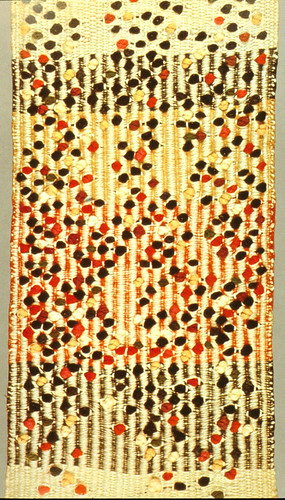Brenda was the technician for the Fibre Arts Department at the Alberta College of Art and Design in Calgary for several years, so she knows her stuff. It was all the more of a relief to see her techniques, which include things like "add a glug of vinegar" and "just put it in the pot and don't worry about it!" She dispelled a lot of misinformation I had been carrying around with me and took some of the fear out of dyeing. Perhaps fear is too strong of a word for something as fun and magical as dyeing. It may be more accurate to say that she calmed us down, particularly in our anxiety about felting the wool. She had the pots up to a rolling boil with merino fleece in them. Merino! The secret is apparently to let the wool cool down in the pot. Such a simple thing.
I have been experimenting with my new found knowledge.
Here are two types of different wool dyed with Peruvian madder (masham on the left and merino on the right)

Here is some natural grey Shetland wool dyed with organic acid dye (in blue, obviously!). I am really loving dyeing fleece that is naturally coloured grey or brown. You can see I have not achieved a perfectly even dye effect here, but the beauty part is: I don't want one!
 And this, my friends, is a pot that is cooling down as I write this. That bright yellow comes from alder leaves harvested from our backyard. I boiled them up for almost an hour (again, nearly to the death of us with the smell!), then strained out the leaves, put in the fleece, a dash of alum and voila! (Another thing Brenda shared with us is that you don't have to pre-mordant the wool. Liberation is at hand, I tell you!). I have the alder twigs soaking. I have heard they give a very nice green/brown but need to be soaked for several days.
And this, my friends, is a pot that is cooling down as I write this. That bright yellow comes from alder leaves harvested from our backyard. I boiled them up for almost an hour (again, nearly to the death of us with the smell!), then strained out the leaves, put in the fleece, a dash of alum and voila! (Another thing Brenda shared with us is that you don't have to pre-mordant the wool. Liberation is at hand, I tell you!). I have the alder twigs soaking. I have heard they give a very nice green/brown but need to be soaked for several days.
 And this, my friends, is a pot that is cooling down as I write this. That bright yellow comes from alder leaves harvested from our backyard. I boiled them up for almost an hour (again, nearly to the death of us with the smell!), then strained out the leaves, put in the fleece, a dash of alum and voila! (Another thing Brenda shared with us is that you don't have to pre-mordant the wool. Liberation is at hand, I tell you!). I have the alder twigs soaking. I have heard they give a very nice green/brown but need to be soaked for several days.
And this, my friends, is a pot that is cooling down as I write this. That bright yellow comes from alder leaves harvested from our backyard. I boiled them up for almost an hour (again, nearly to the death of us with the smell!), then strained out the leaves, put in the fleece, a dash of alum and voila! (Another thing Brenda shared with us is that you don't have to pre-mordant the wool. Liberation is at hand, I tell you!). I have the alder twigs soaking. I have heard they give a very nice green/brown but need to be soaked for several days. And here is a gratuitous cat shot. Minkie enjoying the morning sunshine (and a camera in her face).

















































